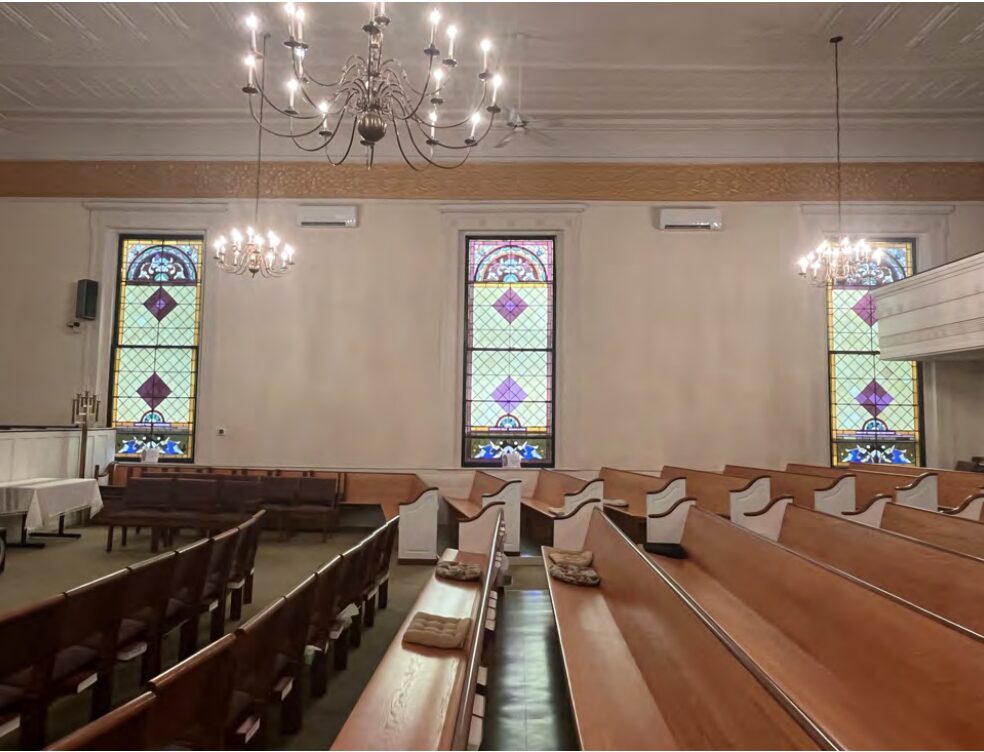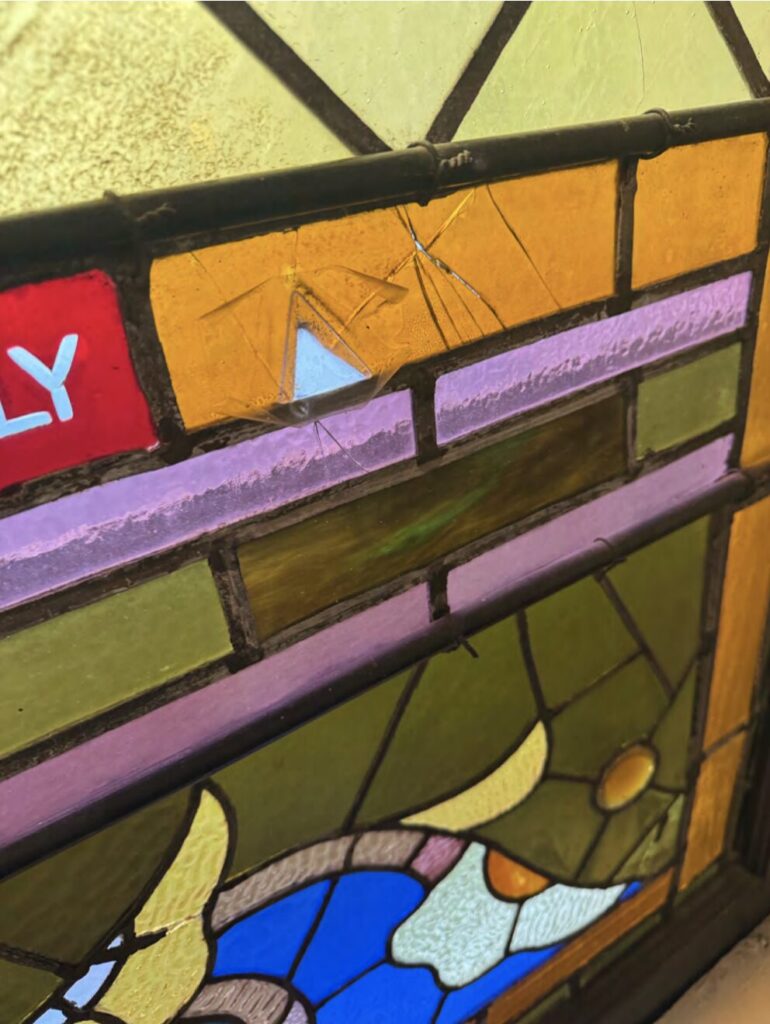Historic Commission Approves Stained Glass Window Restoration at JCA

The Amherst Historic Commission recommended that Community Preservation Act funds be allocated to the restoration of three stained glass windows in the sanctuary of the Jewish Community of Amherst. Photo: amherstma.gov
Report on the Meeting of the Amherst Historical Commission, November 25, 2024
This meeting was held over Zoom and was recorded.
Present
Robin Fordham (Chair), Madeleine Helmer, Hetty Startup, and Antonia Brillembourg
Staff: Nate Malloy (Senior Planner), Walker Powell (Planner).
Restoration of Stained Glass Windows
The Jewish Community of Amherst (JCA) has requested $210,000 of Community Preservation Act funds to restore the 12-foot stained glass windows in the sanctuary. Keren Rhodes, representing the JCA, said that the synagogue wanted to update its insurance policy, but an insurance appraiser said that the windows were in imminent danger of collapsing and must be repaired. This was a special concern because the windows are in an area where people can touch them, next to the seating in the sanctuary. She said the windows are cracking and bowing and pulling away from their leaded backing. Also, the transparent outer windows are clouded and damaged.

The windows were added to the 1834 building in the 1890’s and contain the names of prominent Amherst families. They depict geometric shapes and flowers, not religious scenes. The building once housed the Second Congregational Church. It was purchased by the JCA in 1976. It is open to the public Thursdays through Sundays.
Rhodes explained that it would be much more expensive to restore the windows in phases, since most studios that do the work are several hours away and would need to make separate trips for each phase. She said the work would be best done at one time over the summer, when the building is used less. The building now has mini-split heat pumps to provide air conditioning, so the windows will no longer need to be opened in warm weather, which should increase their longevity.
The commission agreed to draft a letter to the CPA committee in support of the project. The building is on the state register of historic buildings.
Demolition Permitted for Fire Damaged 1890s Farmhouse
The commission held a public hearing to discuss owner Larry Hansen’s request to demolish a late 19th-century farmhouse at 72 Curtis Place in east Amherst off of Rt. 9 that was heavily damaged in an electrical fire in February, 2024. The fire started in a second-floor bathroom fan and severely damaged the roof. Water damage during the response to the fire further impacted the walls, flooring and heating system. Hansen said he received an estimate of at least $400,000 to repair the damage, so he wants to demolish the existing structure and build a new duplex.
The Historical Commission members and staff were unable to uncover much of the structure’s history. Hetty Startup pointed out that there are not many historic properties in the eastern part of Amherst. In the 1970’s, the farmland around the house was subdivided to become the Logtown Road subdivision.
In determining that the house was historically significant, Madeleine Helmer pointed to the Greek Revival façade, characteristic of properties in the Northeast from that time period. Robin Fordham said the several additions to the original structure were also common. Startup noted that, although commissioners could not enter the building during their site visit, their view through the doorway and windows showed well-proportioned rooms and many historical elements.
Although the commission found the structure to be historically significant, they decided that with the extensive damage from the fire, a demolition delay did not make sense. It was unlikely that any plan for rehabilitation or sale would be successful. Fordham also noted that the structure no longer has its original context as a farmhouse because of the surrounding subdivision.
However, the commissioners lamented the lack of documentation about the house. They recommended that pictures be taken of the structure and its internal features, as well as measurements, and that the commission present these to the Massachusetts Historical Society for possible inclusion in the Massachusetts Cultural Resource Information System. Hansen agreed to make a photographic record of the property.
Update on Historic Review of the Jones Expansion Project
Helmer and Startup recounted the status of the Section 106 review of the Jones Library Project, for which they were the consultants representing the commission. They both expressed concerns that the town would move forward with the project without accepting the input from the Massachusetts Historical Commission. Planner Nate Malloy cautioned that, because the topic was not on the agenda, the commission should not discuss it in detail. He recommended that an update on the Section 106 review be put on the December meeting agenda.

Those windows are a historically significant photo of rural America in the 1890s and definitely worth preserving.
What I find amazing is that East Amherst didn’t split off to form its own town — the church itself was formed in 1772 and back then the requirement to form your own town was to prove that you had the ability to support a church and minister, which they clearly did.
The Second Church was formed by patriots who split off from the First Church and its Tory minister. The first building of the Second Church was on the East Street Common.
Before the separation of Church and State in Massachusetts, Congregational churches were also our meetinghouses. There were five Congregational churches in Amherst fifty years ago: North, South, First, Second and Hope Congregational Church.